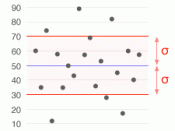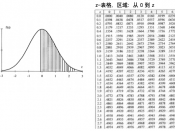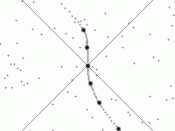1. Objective
The objective of the first experiment of the PH1004 laboratory course is broken down into two parts. In part A, the aim is to determine the average velocity and instantaneous velocity of a glider, which runs along a straight line on an air track. Average velocity, which is a vector quantity, can be defined as the displacement divided by the time. The displacement of an object is defined as the vector distance from some initial point to a final point. For the special case of straight-line motion in the x direction, the average velocity takes the form:
One can approach an expression for the instantaneous velocity at any point on the path by taking the limit as the time interval gets smaller and smaller.
These two values will be computed by utilizing photogates placed above the air track to measure the time intervals of the glider's motion between distinct points.
In part B, the intention is to gauge an acceleration (constant) of a glider. Acceleration, inherently a vector quantity, is defined as the rate of change of velocity. The instantaneous acceleration at any time may be obtained by taking the limit of the average acceleration as the time interval approaches zero. This is the derivative of the velocity with respect to time:
Similarly, this value will be attained using a photogate to calculate the time interval; a weight will be connected to the glider by a string draped over a pulley to create the necessary acceleration.
2. Raw Data Tables
Part A Variables
Symbol Description Measurement Tool
XG1 Position of photogate G1 Meter Stick
XG3 Position of photogate G3 Meter Stick
Xb The coordinate when the beam of G2 is just blocked by the flag Meter Stick
Xub The coordinate of the right edge of the glider when...


